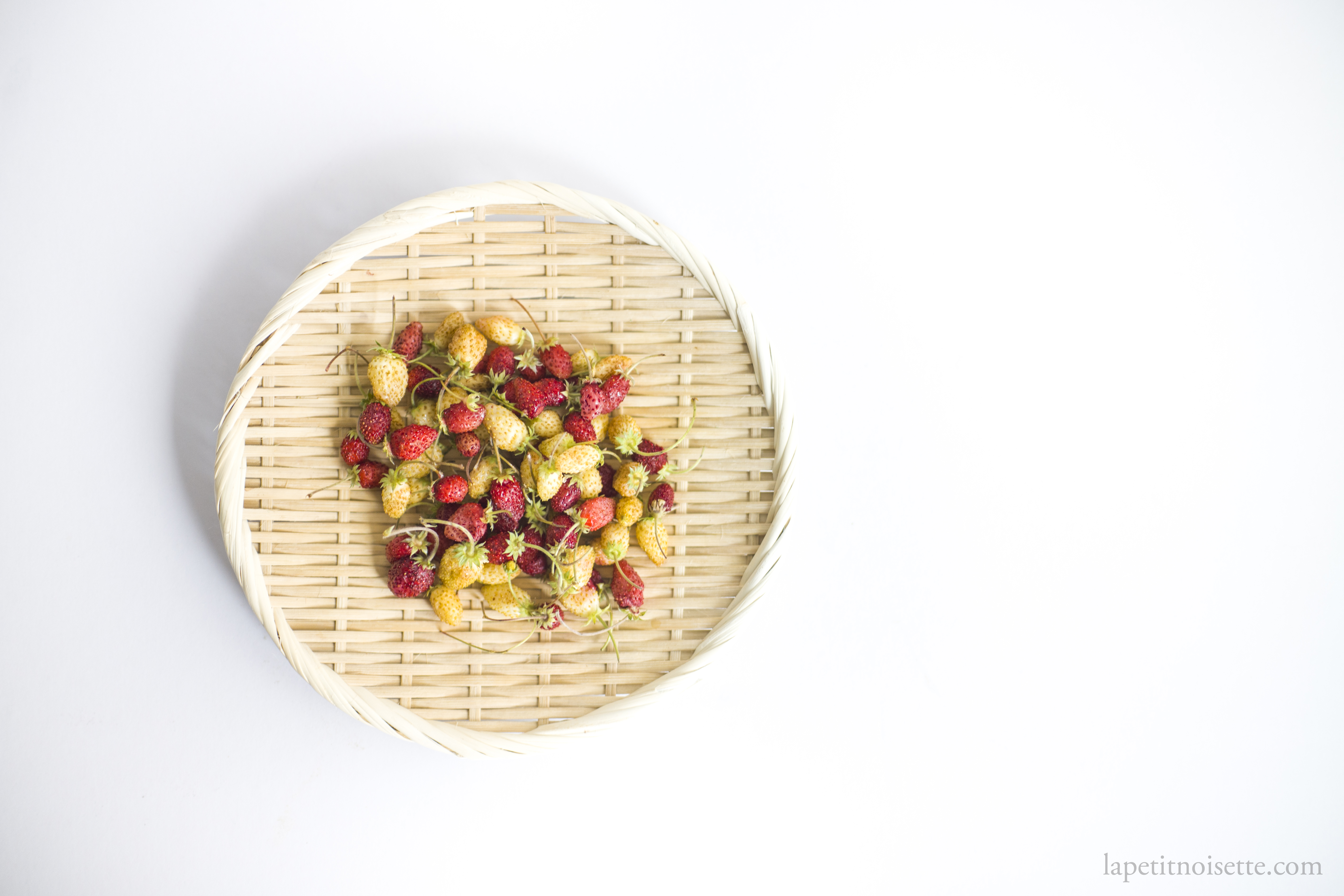
The very mention of Christine Ferber’s jams always bring back memories of attending pastry school at Le Cordon Bleu in Paris where I would wonder down the aisles in La Grande Epicerie, staring at all the posh and expensive ingredients from around the world that I’d not dream to eat, but dream to cook for other people. People who are experts in fine dining but are not familiar with the world of jams and jellies might not have heard of Christine Ferber, who even Pierre Hermé himself claims makes the best jams in the world. Her jams can be found in many of the most traditional fine-dining establishments that serve classical French fare, from Alain Ducasse and Troisgros to The Connaught in London. She herself has also been nicknamed by the locals in her town as the fairy of jams.
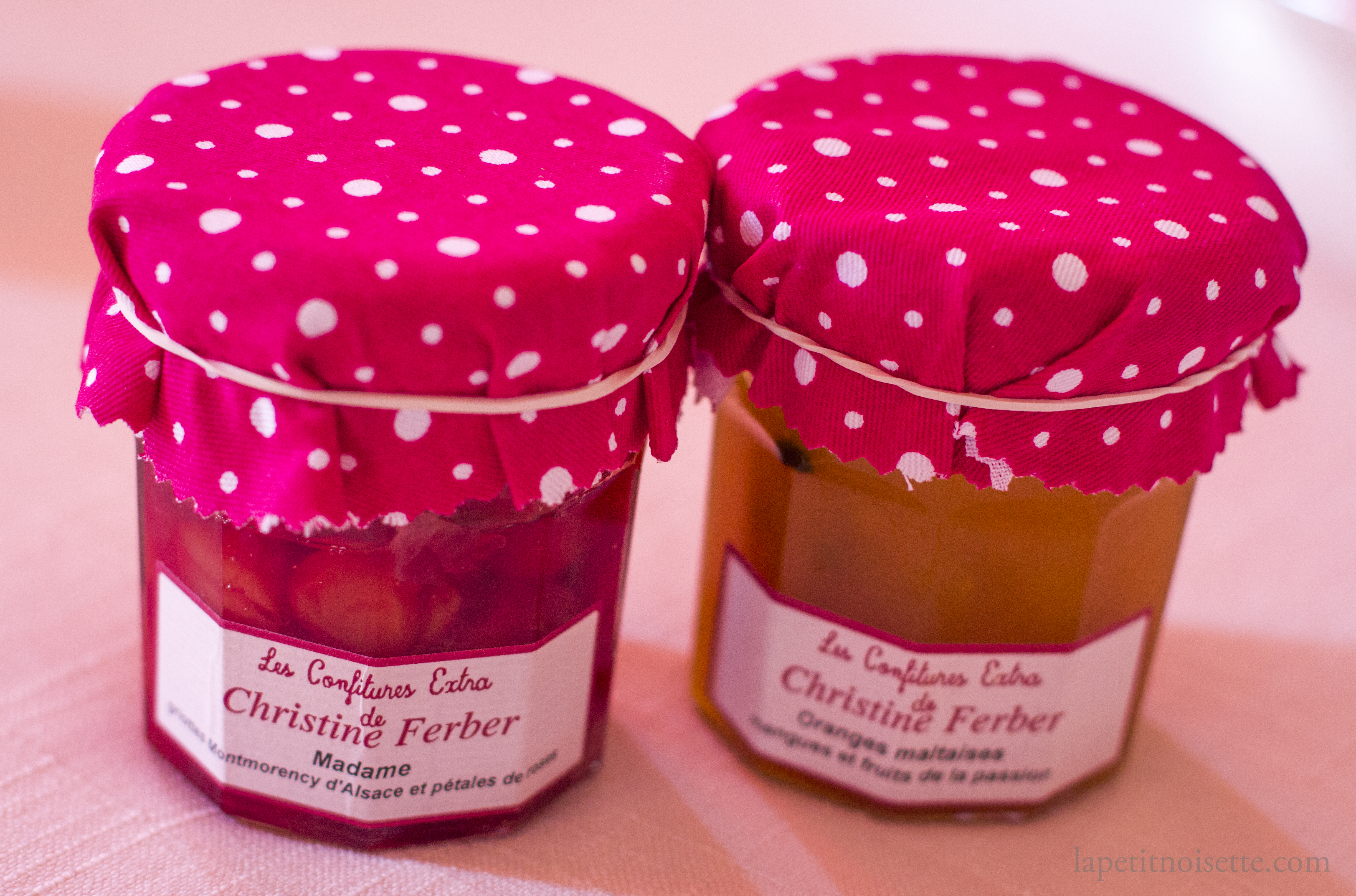
My own very first tasting of Christine Ferber’s jams was during a stay at Château Beychevelle that we had won at the X-Wine Blind Tasting competition at Chateau-Figeac as part of the Oxford University Blind Wine Tasting Team.
A selection of her jams were available for us to choose from during breakfast to pair with croissants, with each jar perfectly wrapped in their now famous red cloth and with a white bow. Back then, my favourite from the jams available to us was the jam of Morello cherries of Alsace but I’d since heard that her most famous jam is that of wild alpine strawberries (Confiture de Fraises mara des bois) and I vowed to one day try it.

I was surprised myself when I found a large collection of Christine Ferber’s jams in Tokyo and Kyoto’s Isetan and when I happen to stumble across wild strawberries in a tiny store in the vegetable section of the Kyoto Central Wholesale Fish Market (中央卸売市場第一市場) (not the tourist filled Nishiki Market), I couldn’t resist trying to make Christine Ferber’s wild strawberry jam. The wild strawberries had this incredibly potent scent, like strawberries on steroids and whilst they weren’t particularly sweet to eat, they definitely pack a punch when mixed into normal strawberry jam.
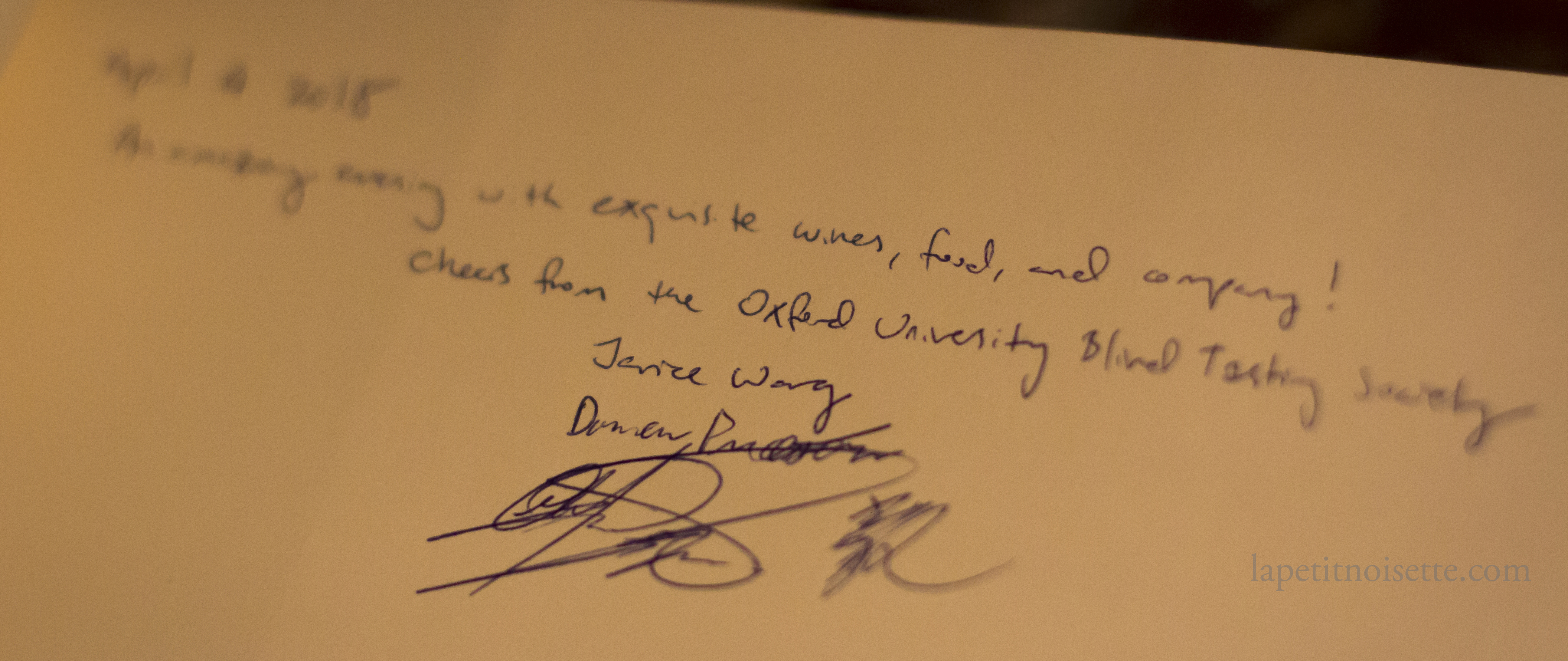
A big part of Christine Ferber’s image is of how batches of jam are made in copper pots and bowls, with each batch made in small quantities of not more than 4 kilograms, using only the best local fruit. This actually makes a lot of sense as jam typically only consists of three simple ingredients, sugar, fruit and lemon juice and so jam recipes are highly dependent on the quality of fruit you use. So while we won’t have access to Chrstine Ferber’s Alsatian cherries and strawberries, I’m sure any of the fruits at its peak season wherever you live will be able to complete, especially if allowed to ripen on the plant. By making small batches of jams, you’re basically ensuring that the jam it’s setting temperature as quickly as possible (105°C) so that the fresh taste of the fruit remains and your jam doesn’t just taste of stewed fruit.
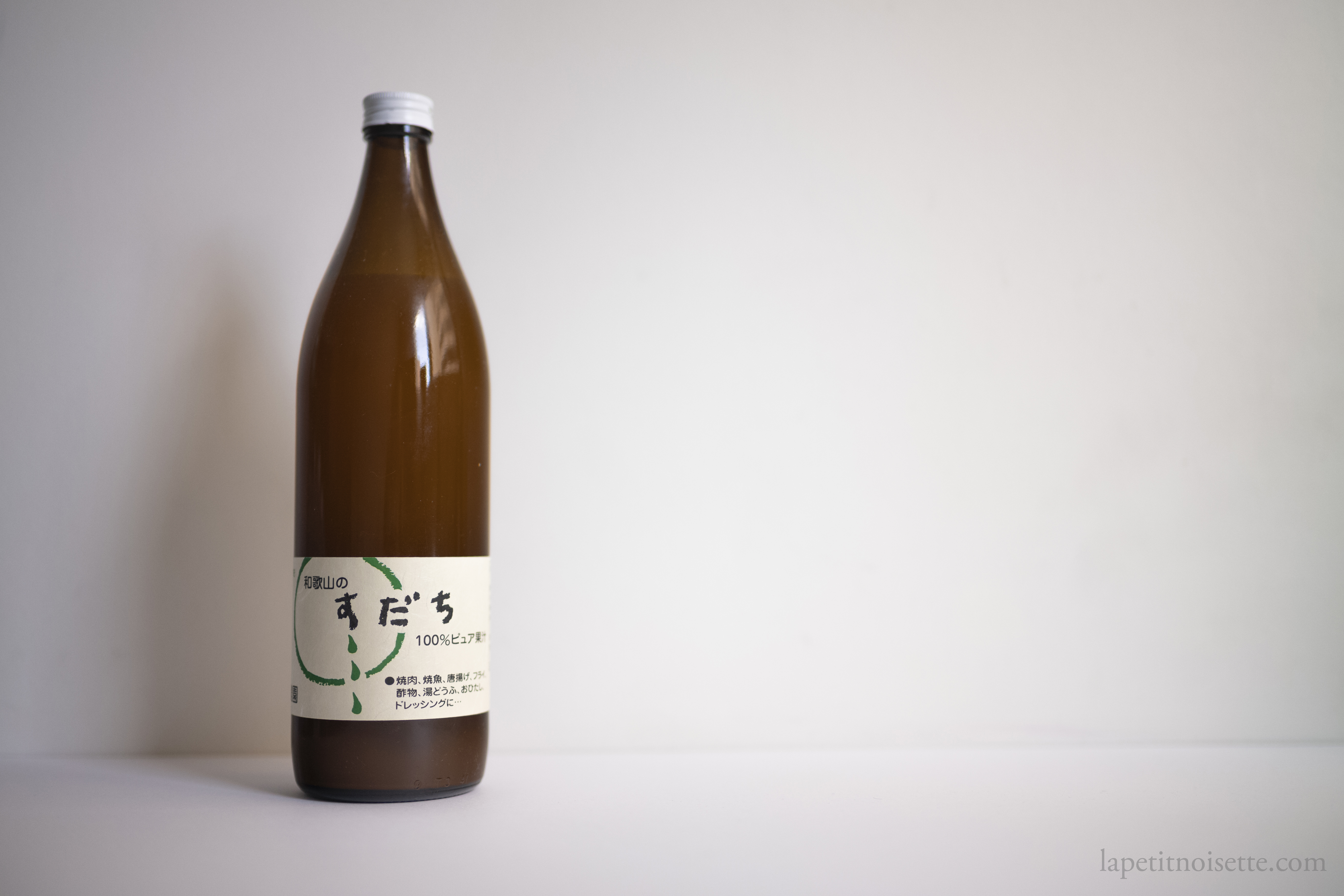
In terms of the use of citrus in jams, the main purpose of adding lemon juice is to lower the pH of the jam, which in turn helps the jam to set or solidify. For a basic chemistry primer, pectin, which causes the jam to set, has a naturally negative charge which repels each other. When you add acid to mixture, you’re basically adding hydrogen ions to the mixture and since hydrogen ions have a positive charge (H+), they are able to neutralise the negative charge on the pectin strands which then allow the pectin strands to assemble into a network and give your jam it’s wobbly texture (this is actually why pH is short for power hydrogen).
But this means you could technically add any acid you’d prefer to your jam, including pure citric acid if you don’t want any taste of lemon at all, or any other citrus fruit you can think of, so long as there is enough acid. In fact, when making your own homemade jams, it’s actually recommended that you use bottled lemon juice compared to fresh lemons, as it’s hard to judge the level of acidity in your lemon based on its ripeness and it’s bottled counterpart is far more consistent in the result it gives.
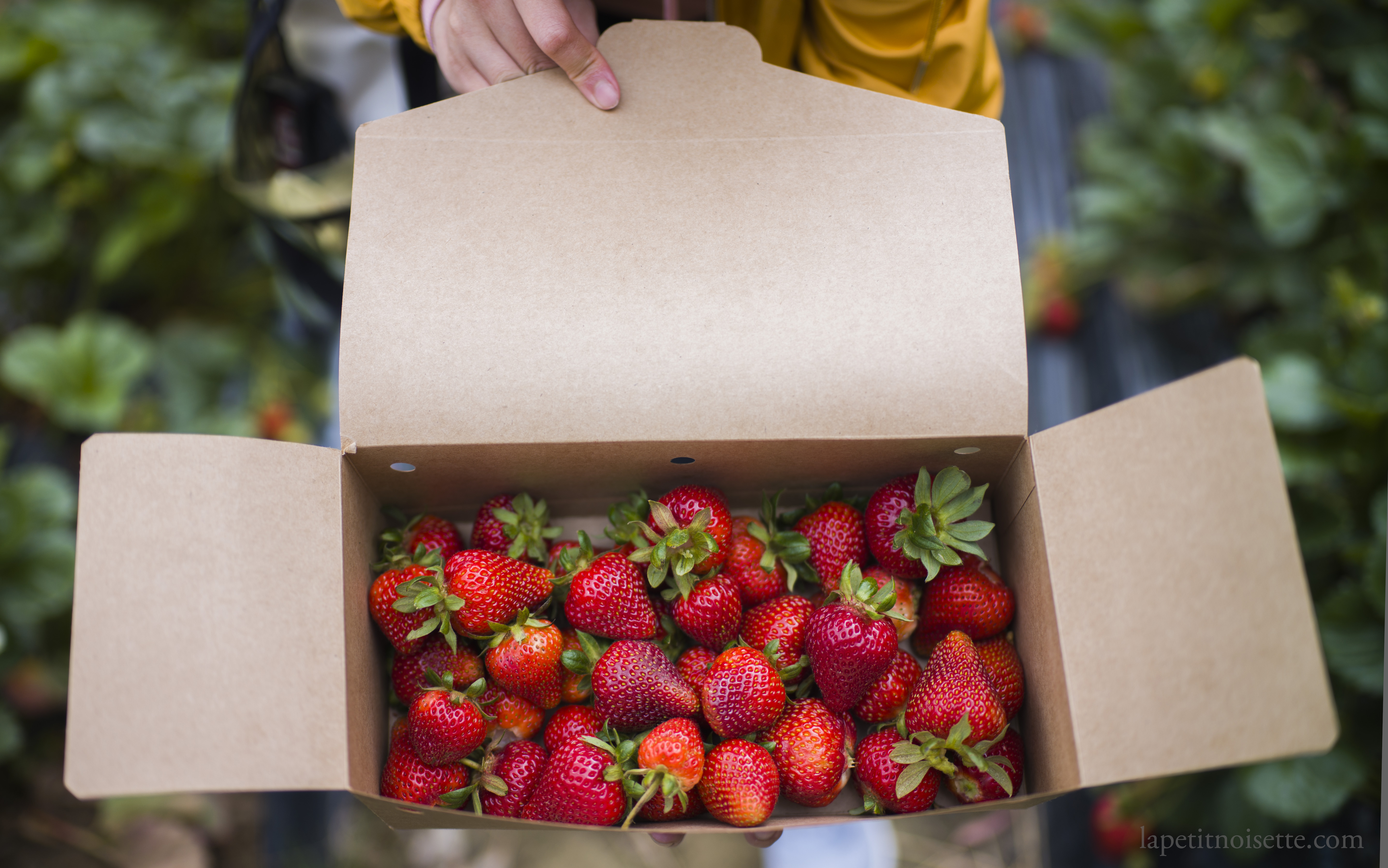
For this recipe, I had a bottle of Japanese sudachi juice that I thought its pine-like flavour would pair well with the flavour of wild strawberries. And thus substituted the lemon in the recipe with sudachi juice. The average lemon has around 45ml of juice in it but I had to use 70ml of sudachi juice (~2 sudachis) to achieve the correct balance of acidity to sweetness in taste that I wanted in the jam. Strawberries themselves naturally do not contain much pectin and thus this jam is more watery than you’d typically expect. If you’d like a more set jam, I’d recommend you add some additional store bought pectin or pre-mixed jam setting agents and follow the instructions on the packet. The technique used below is true to the recipe that Christine Ferber uses in her book Mes Confiture other than the substitution of lemon for sudachi. I’ve tested out using 100% wild strawberries for this recipe before and it’s too sour and a little bitter for my liking.
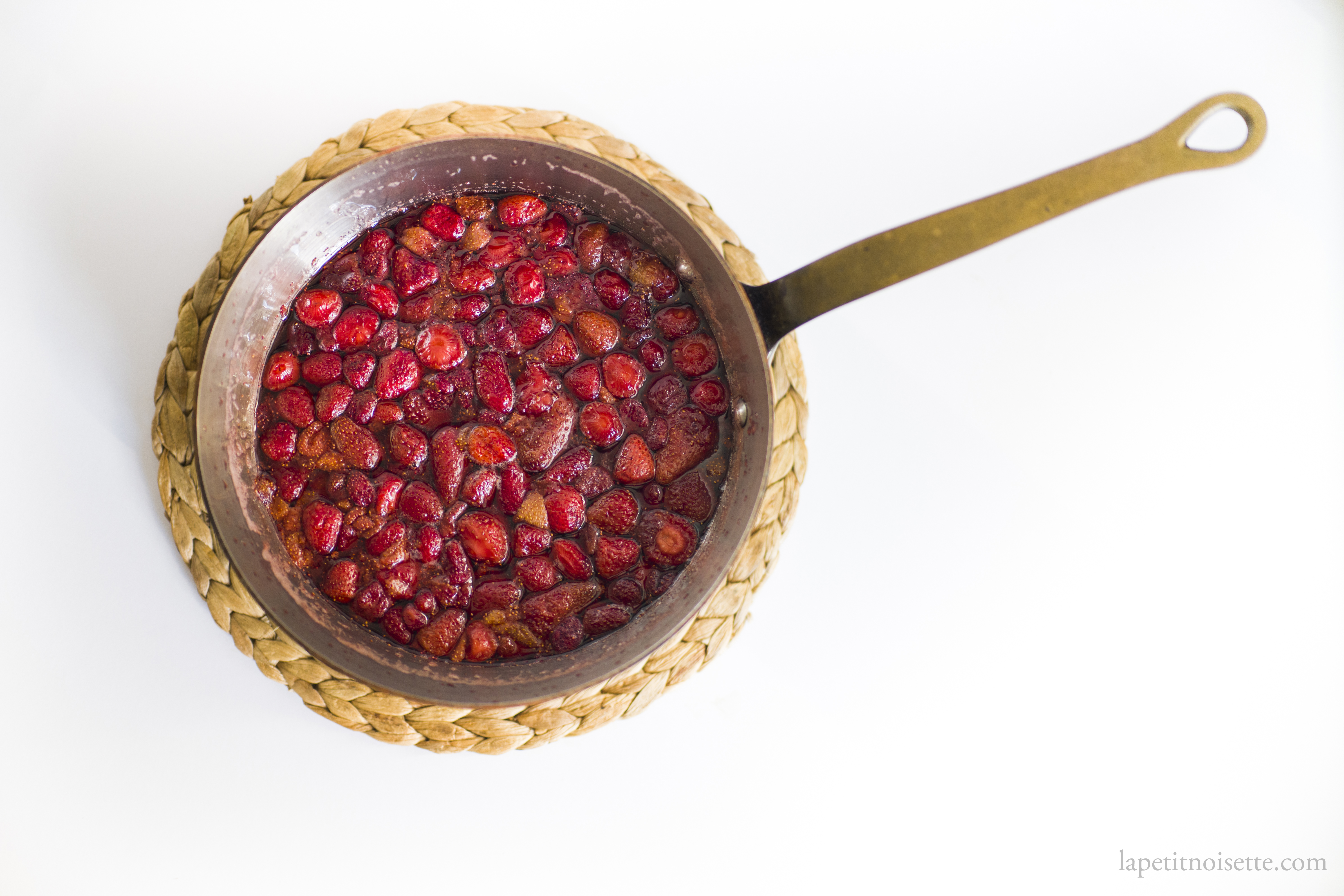
An important note on wild strawberries before we continue. The everyday strawberries that we eat are in the Fragaria genus which is part of the Rosaceae (rose) family. It is actually a hybrid between Fragaria virginiana and Fragaria chiloensis, which is why it’s species name is typically denoted as F. × ananassa. The wild alpine strawberries used in this recipe’s scientific name is Fragaria vesca and thus they also come from the Fragaria genus. These are the same strawberries called fraisier des bois in France. What’s interesting here is that there exists another genus called Rubus that is also in the rose family that contains raspberries and blackberries and all the berries that Japanese people call wild strawberries (野生のイチゴ). So if you’re lucky enough to stumble across wild strawberries in Japan, the majority of them such as the bear strawberry (クマイチゴ/kuma ichigo), maple strawberry (モミジイチゴ) and snake strawberry (ヘビイチゴ) and actually in the Rubus genus and thus not strictly speaking “strawberries” though I’m sure you could still use them in this recipe. Just make sure they’re safe for consumption before proceeding.
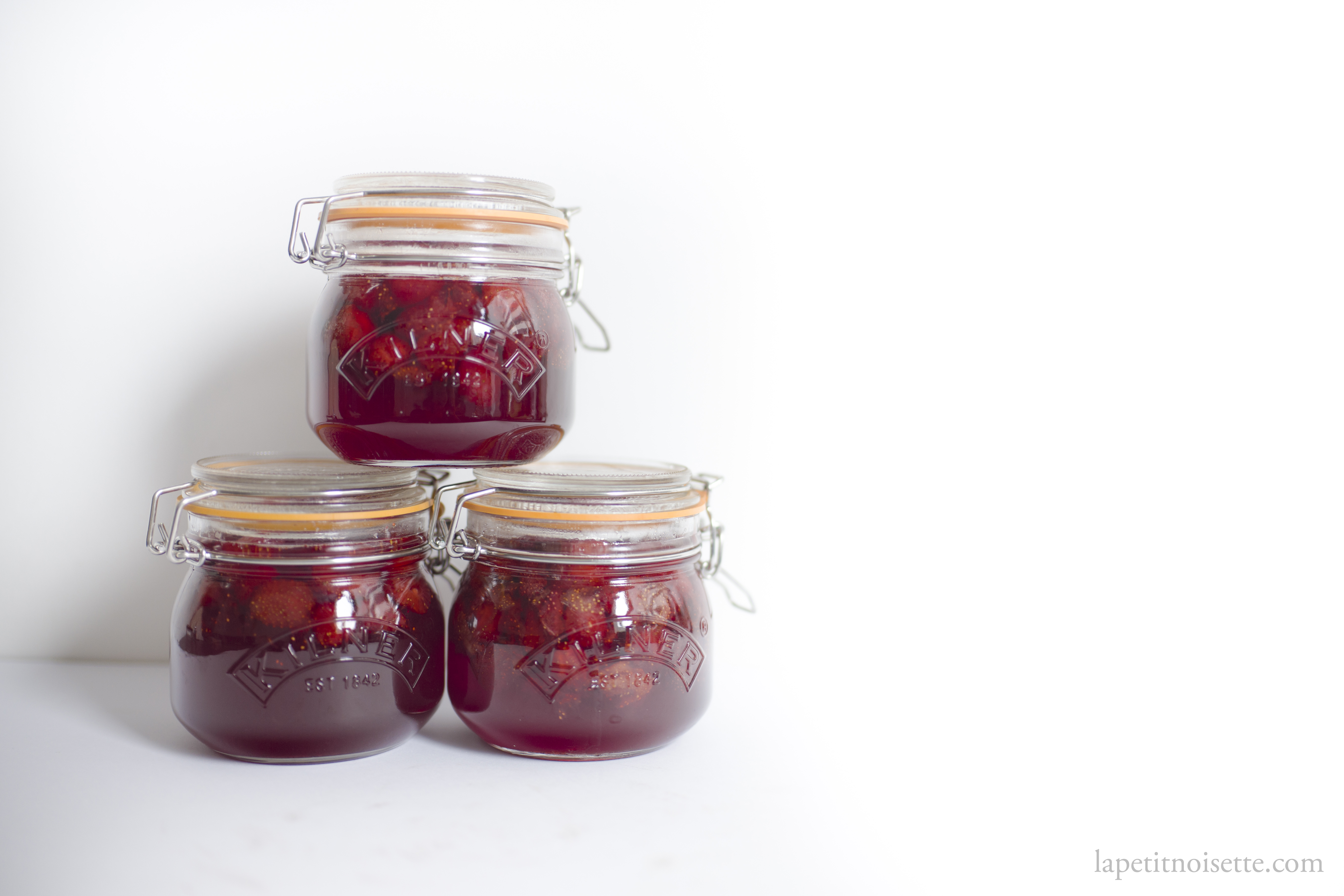
Wild Alpine Strawberry Jam with Sudachi (Makes 1500ml of jam)
1100g of strawberries to yield 1000g once cleaned and hulled
250g of wild strawberries
1000g of white granulated sugar
70ml of sudachi juice
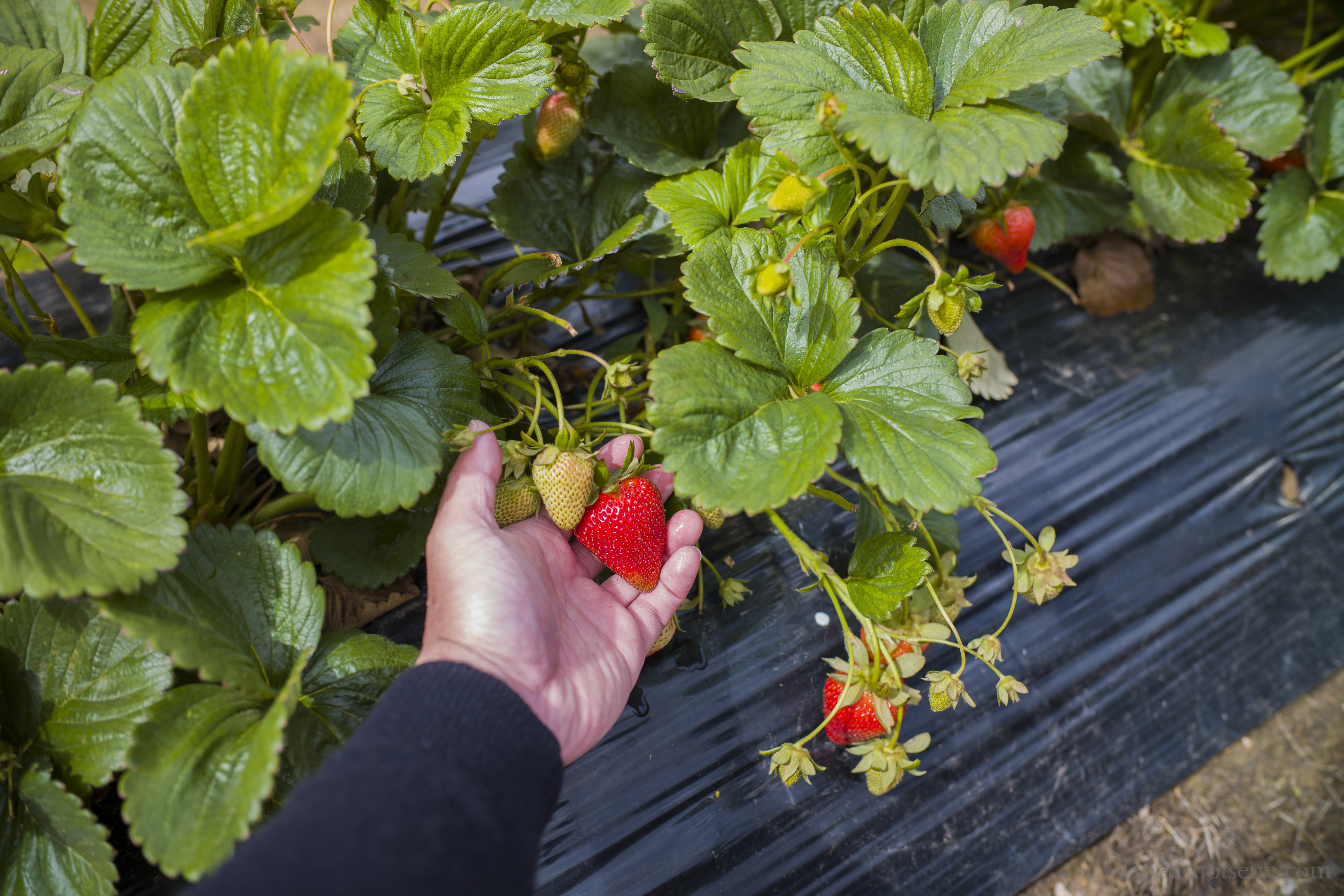
- Wash the normal strawberries in water and drain before hulling them.
- If using small strawberries it is possible to use them whole of the jam, if not cut the strawberries in half or quarters based on how large the strawberry pieces you want in your jam. Bear in mind the strawberries shrink a bit during the jam making process.
- Mix the sugar, sudachi juice and normal strawberries in a non-reactive bowl and allow to macerate overnight. Cover the strawberries with a sheet of baking paper and cling wrap the top of the bowl.
- The next day, pour the mixture into a pot and add the wild strawberries. Bring the pot to a simmer before immediately pouring the mixture back in a non-reactive bowl and refrigerate again for another night. Cover the strawberries with a sheet of baking paper and cling wrap the top of the bowl.
- On the third day, sterilize your jam jars by washing the jars and the lid in hot water before leaving to dry upside down on an oven tray and heat in the oven at 180ºC for 15 minutes. If using jars with a rubber ring seal/gasket, remove the ring before boiling the jars in a pot for 2 to 3 minutes.
- Pour the mixture through a fine meshed strainer into a pot to remove the strawberries and wild strawberries from their juices. Bring the pot up to a boil and skim away the foam that forms on top for the first minute or so once simmering. At this point, you can put a plate into the freezer to use to test the jam later.
- Turn up the heat until the juice is at a rolling boil and boil at high heat until the temperature measures 105°C on a thermometer. To test the jam, use a spoon to drip a little jam onto the plate from the freezer and chill in the fridge for 2 more minutes. Take the plate out of the freezer and push the jam with your fingers. The jam should not be runny at this point but instead wrinkle and be slightly gel-like. At this point the jam is ready.
- Add the strawberries and wild strawberries back into the juice and continue to boil again on high heat for 5 more minutes, stirring gently for the whole 5 minutes without breaking or crushing the strawberries which should be quite soft at this point.
- Immediately pour the hot jams into your pre-cleaned jars at this point, seal and allow to cool.
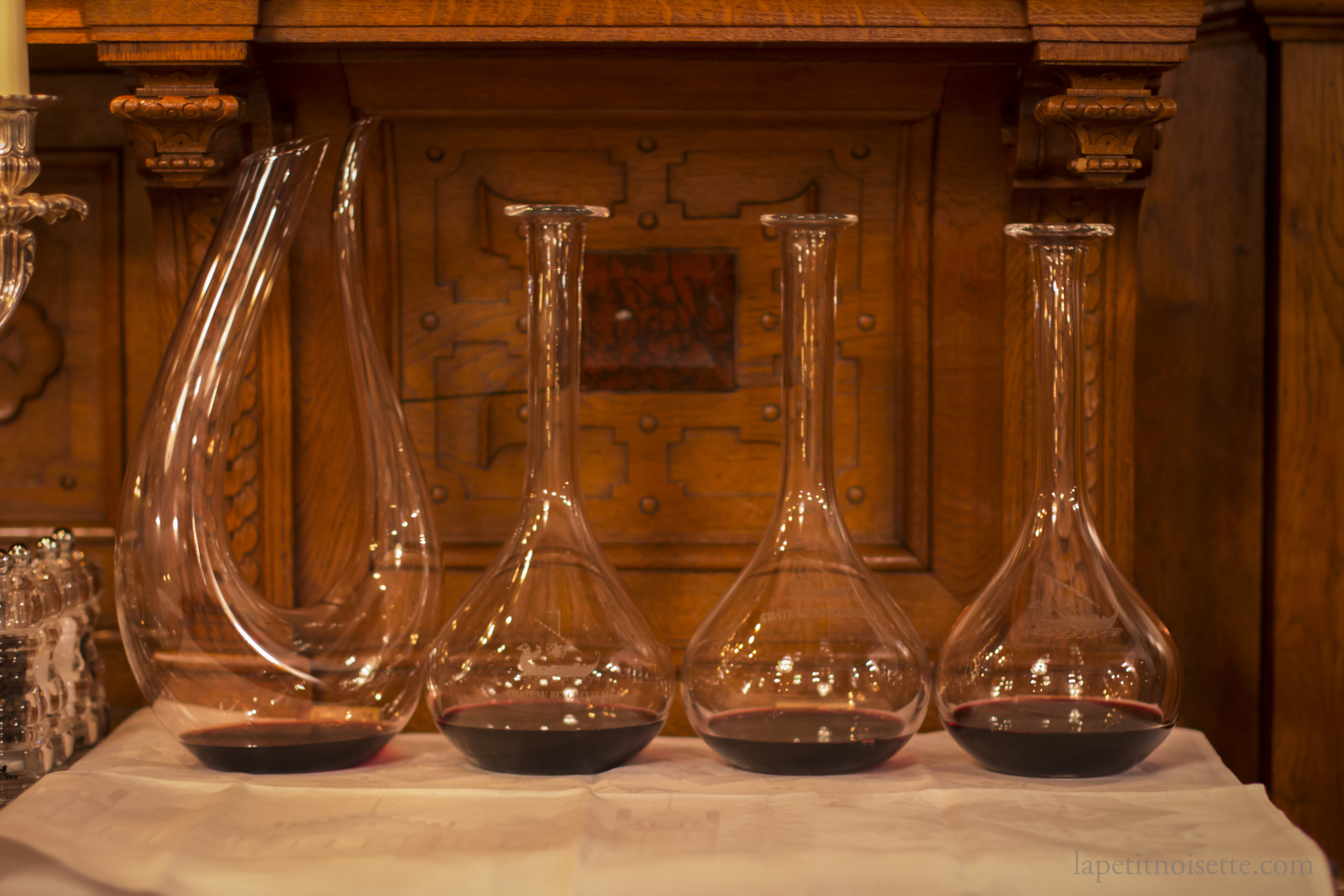
Thanks for that. While out picking mushrooms these days I often come across will raspberries growing in the woods, as well as the omnipresent blueberry bushes. Very rarely I find the tiny wild strawberries, about the size of a child’s little-finger tip, but packed with a perfumed intensity impossible to find in cultivated berries.